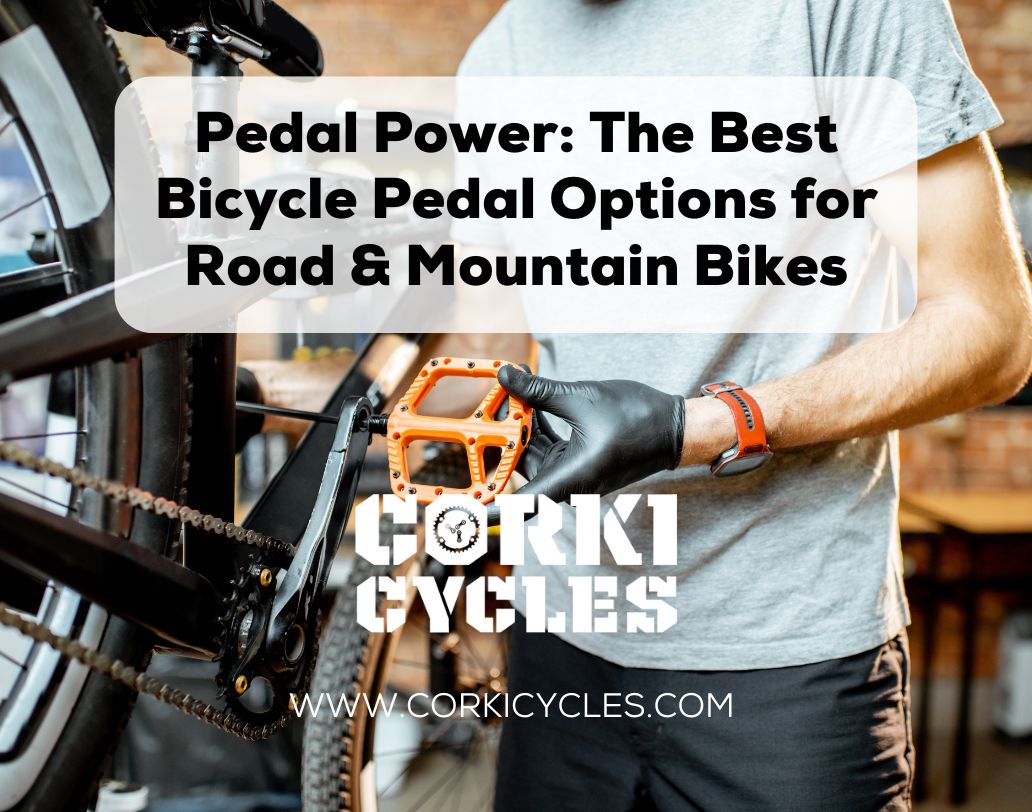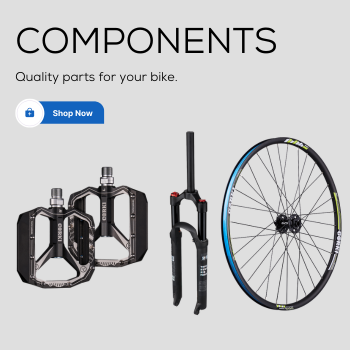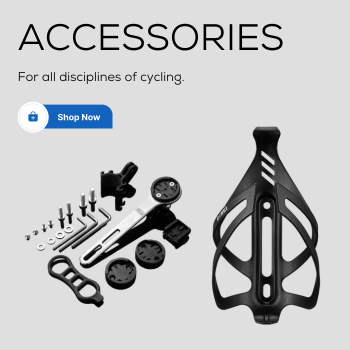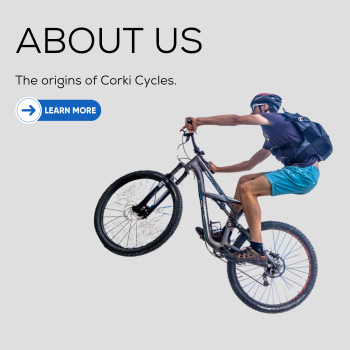
When it comes to choosing the right pedals, whether for road cycling or mountain biking, the options can be overwhelming. From platform pedals to clipless pedals and everything in between, each type has its advantages and considerations.
In this blog post, we'll explore all the different varieties of bicycle pedals and uncover the best options for road and mountain bikes. We'll explore the different types of pedals and discuss their pros and cons. Then, we'll provide recommendations based on riding style, terrain, and personal preferences.
Understanding Different Types of Bike Pedals
When it comes to bike pedals, there are several types to choose from. Each offers unique features and benefits. Let's take a closer look at three primary categories:
Platform Pedals
Platform pedals, or flat pedals, are the most common type. These pedals feature a flat surface where the rider's foot rests, often equipped with pins or ridges for added grip. They are known for their simplicity and versatility. You can see them in the city, on mountains, roads, or on other bikes. This pedal shape is particularly suitable for beginners, city cyclists, and anyone who likes to be as flexible as possible on the road.

Pros:
- Easy to use. It is suitable for all types of footwear, including regular shoes and sandals.
- It provides a large and stable surface area for the foot, enhancing comfort and control.
- It is quick and easy to engage and disengage. You can easily change the positioning of your foot on the pedal. It can be a great choice for city riding or stop-and-go traffic.
Cons:
- Limited efficiency compared to clipless pedals. As they lack the ability to transfer power through the pedal stroke directly.
- Less suitable for aggressive or technical riding styles, where foot retention is crucial.
Clipless Pedals
“Clipless” is a misleading name since clipless pedals require special cycling shoes. It is equipped with cleats that attach to the pedal mechanism. Unlike platform pedals, clipless pedals offer a secure connection between the rider's foot and the pedal, allowing for efficient power transfer throughout the entire pedal stroke. This type of pedal is popular among road cyclists, triathletes, and experienced mountain bikers seeking maximum performance and control.

Pros:
- Enhanced power transfer and efficiency, resulting in improved speed and endurance.
- Provides a secure and stable connection between the foot and the pedal, reducing the risk of slipping or bouncing.
- Allows for precise adjustments to pedal tension and float, catering to individual preferences and riding styles.
Cons:
- More expensive. Clipless pedals require specialized cycling shoes and cleats, which can be expensive and may take some time to get used to.
- Clipless pedals can be challenging for beginners, as they require learning how to clip in and out safely.
Combination Pedals
Combination pedals, also known as hybrid or dual-sided pedals. It offers the best of both worlds by combining the features of the platform and clipless pedals into a single design. These pedals typically feature a platform for casual riding and a clipless mechanism, on the other, for more aggressive or performance-oriented cycling.

Pros:
- Versatile design that accommodates various riding styles and preferences.
- Allows riders to switch between platform and clipless modes depending on the terrain or riding conditions.
- Provides a stepping stone for beginners transitioning from platform to clipless pedals, offering the option to adjust to the clipless system gradually.
Cons:
- Due to the dual-sided design, it can be bulkier and heavier than the dedicated platform or clipless pedals.
- It may require flipping the pedal to access the desired side, which can be inconvenient in certain situations.
Understanding the differences between platform, clipless, and combination pedals is essential for selecting the right option based on your cycling goals and preferences.
In the next section, we'll explore key factors to consider when choosing bike pedals, including riding style, shoe compatibility, budget, and maintenance requirements. By understanding these factors, you can make an informed decision and find the perfect pedals for your cycling needs.
Factors to Consider When Choosing Bike Pedals
Choosing the right bike pedals isn't just about grabbing the coolest-looking ones you see. There's a lot of stuff to think about before you make your pick. You have to make sure your pedals fit your riding style, what you like, and how much cash you're willing to throw down. Here are some important considerations to keep in mind:

Riding Style and Terrain
Consider where and how you'll ride the most. Are you cruising along smooth roads on a road bike, or tearing through rocky trails on a mountain bike? Your riding style and the terrain you tackle make a big difference in picking the right pedals for you. For example:
If you're into road biking, you might dig lightweight clipless pedals. They're super efficient for transferring power during those long rides.
If you're more of a mountain biker, you might be all about those sturdy platform pedals. They give you a solid grip, perfect for keeping steady on those tricky trails.
Shoe Compatibility
Think about what shoes you'll wear when you ride with your pedals. Clipless pedals need special cycling shoes with cleats on the bottom. It locks into the pedals. Make sure your shoes match the pedals you pick. But if you're going for platform pedals, you're good to go with any shoes you like—sneakers, hiking boots, whatever floats your boat!
Budget
Pedal prices can be all over the map. It depends on the brand, what they're made of, and what cool stuff they come with. Before you start pedal shopping, figure out how much you want to spend. Look for pedals that give you the most bang for your buck. Sure, fancy pedals might have all the bells and whistles, but there are plenty of cheaper options that still work great and won't break the bank.
Maintenance Requirements
Think about how much work you're willing to put into keeping your pedals in tip-top shape. Clipless pedals might need a little TLC now and then. For example, add some lube or tweak the tension to ensure it is smooth and snappy. However, platform pedals are usually pretty chill when it comes to maintenance. You just need to give them a scrub or swap out some pins or bearings every now and then. Just keep in mind how much time and effort you want to spend on pedal upkeep when you're picking out the ones that are right for you.
By carefully considering these factors, you can narrow down your options. And figure out which pedals are gonna be the best match for you and your bike. Remember that the right pedals can enhance your riding experience and performance, so take the time to find the perfect fit for your bike.
Conclusion
In cycling, pedals play a crucial role in overall riding performance. They serve as the interface between you and your bike.
Remember, the best bicycle pedals aren't just about functionality. They're about enhancing your experience on the road or trail. So, whether you're embarking on a road ride or tackling rugged mountain trails, invest in pedals that empower you to pedal with power and precision.
Thank you for joining us on this exploration of pedal power. To read more about titanium pedals, see our article "Why You Need Titanium Bike Pedals." If you have questions or want to share your biking tales, please leave them below.
May your rides be smooth, your climbs be conquerable, and your descents be exhilarating. Happy cycling!




